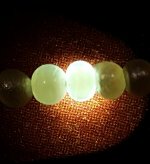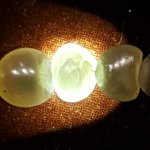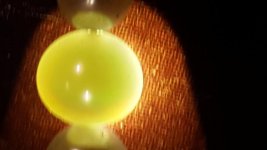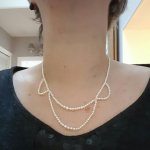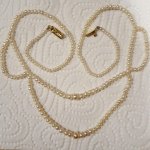kyratango
New Member
- Joined
- Mar 17, 2015
- Messages
- 51
Hi all 
I bought this unusual festoon necklace from Ebay one year ago.
It has been restrung and the modern clasp is marked 14k.
Tiniest pearls are 1.5mm, the two largest are 3.5mm and 4mm.
Whole length is 40.5 centimeters.
I had a try in candling some, hoping you can say something from my pics ;-)
View attachment 39159
I bought this unusual festoon necklace from Ebay one year ago.
It has been restrung and the modern clasp is marked 14k.
Tiniest pearls are 1.5mm, the two largest are 3.5mm and 4mm.
Whole length is 40.5 centimeters.
I had a try in candling some, hoping you can say something from my pics ;-)
View attachment 39159


